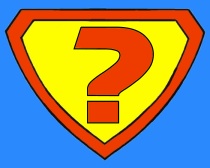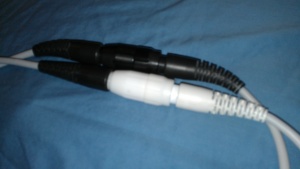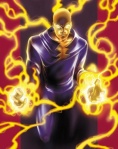 Today was Mom’s birthday. It is the first one that has passed since she did last year. I wanted to do something in my own way to honor her on this day. So I thought I would post the transcript of the eulogy that I gave at her memorial celebration. This is for Mom.
Today was Mom’s birthday. It is the first one that has passed since she did last year. I wanted to do something in my own way to honor her on this day. So I thought I would post the transcript of the eulogy that I gave at her memorial celebration. This is for Mom.
On September 20th (2011) I got the call that my Mom had passed of a sudden heart attack on the way home from her dialysis appointment that day. I wanted to rush to the hospital as they performed heroic measures to see if she could be brought back.
The problem was that I myself was in the hospital at the U of MN awaiting a much-needed heart surgery to keep myself alive and healthy while awaiting a transplant. My Cardio Team was willing to put everything on hold and transport me via ambulance to the hospital where she was brought. After testing showed that the only thing that was keeping Mom’s heart going was the machinery, I knew her soul had already departed to a sweeter place. I opted to listen to my Mother and honor a promise I made to her to make myself, my heart, and my health a priority so I wouldn’t end up on the same health path that she was on. I was to do everything possible to get healthy to be able to continue to live and to be there for my wife and children. It was my responsibility.
She made me make that promise just weeks before I entered the U of MN’s Heart Transplant Program, during one of the too many and too long hospital stays she had gone through during the year.
Responsiblity. It wasn’t the first time this value was impressed upon and instilled in me. At 8 years old, I was given the responsibility to cook dinner for the family one night a week. She gave me a cookbook and taught me how to follow recipes. At 9 years old, Mom had to go back to work to help support the family. She worked overnights, and it was my responsibility to wake, change, and feed my 3-year-old brother and myself, and deliver my brother across the street to a sitter all before carpool came to pick me up for school.
At the time I never realized all of the skills that I was learning during those years that would make me a good father for my own children – changing diapers, cooking, laundry, ironing, and on and on. The best lesson I learned from Mom though, was how to love.
Mom had unconditional love for her three sons (believe me, each one of us tested it at times) and her family, for her grandchildren, and for the extended groups of friends we brought into the house. We watched her raise her grandchildren just as if they were one of her own. We saw her treat our friends as just more of her own children. It was proof that love was not to be discriminatory and was to be freely given to those we care about. An important lesson to enable us to also give and experience love in our own relationships.
We moved a lot growing up. Mom always seemed to meet and find friends easily. Something that I think she did to encourage us to overcome our fears of the new places, and make our own new friends in each situation.
Mom was able to instill such life skills and lessons with us because of what she learned and experienced while growing up. In a house of 6 kids you learned responsibility at an early age. Mom had a job since she was 14 years old. She worked in the Canteen at the VA hospital in Minneapolis while going to school, and became a nurse. As a nurse her care and concern for her patients was also an example of the great love and care she gave. When she left nursing to work for Eli Lily as a Quality Assurance Inspector of the first mass manufactured external heart defibrillators she was a stickler who ensured that every device would perform as designed. Little did she know that 30 years later a defibrillator as small as a deck of cards would keep her eldest son (me) alive. She showed the same tenacity, care, and advocacy for her patients as a case manager for Blue Cross Blue Shield where she championed programs for patients with Hemophilia. She felt she had a very rewarding career even though complications of diabetes brought her career to an end before she would have wished it to.
Growing up to become a young man, father, and husband, it was great to have Mom as our number one cheerleader, advisor, someone who listened to all of our dreams and our fears and offer just the right amount of advice (and yes, sometimes when we didn’t want to hear it).
As we approach Christmas, I feel that Mom is still close by. It was hands down her favorite Holiday. She loved the decorating, the trees, and the lights. She would often just wind down each night of the season sitting in a dark room except for the tree all aglow. She loved holding onto traditions and reminded us to carry them on to our own children, and that is was also very important for us to create and add in our own traditions as well.
This Season is about giving. Giving of love, of gifts, of one’s self. So as we approach the day that the Lord gave us the ultimate gift of His Son, Jesus. I am consoled and rejoice that although Mom stands now with the Lord in heaven, she is free of the pain and the complications of her illnesses that racked her body. She will be with us always in our hearts, especially at Christmas, a Holiday where the example of love we learned from her – A love that came from giving and sacrifices, given unconditionally, truly embodies the gift of love that is the Christmas Spirit. We miss you Mom and love you dearly.
 I have had many heroes and mentors in my life growing up. From fantasy and books; Batman, Superman, Wolverine and the X-Men, Captain Kirk, Luke Skywalker, and on and on. There were heroes from life; Walt Disney, Teachers, Family Members, Co-Workers, and friends. Heroes who inspire me, affected me, motivated and challenged me. I know them fairly well, either through a personal relationship or reading and studying about those heroes.
I have had many heroes and mentors in my life growing up. From fantasy and books; Batman, Superman, Wolverine and the X-Men, Captain Kirk, Luke Skywalker, and on and on. There were heroes from life; Walt Disney, Teachers, Family Members, Co-Workers, and friends. Heroes who inspire me, affected me, motivated and challenged me. I know them fairly well, either through a personal relationship or reading and studying about those heroes.







